DAC HAT
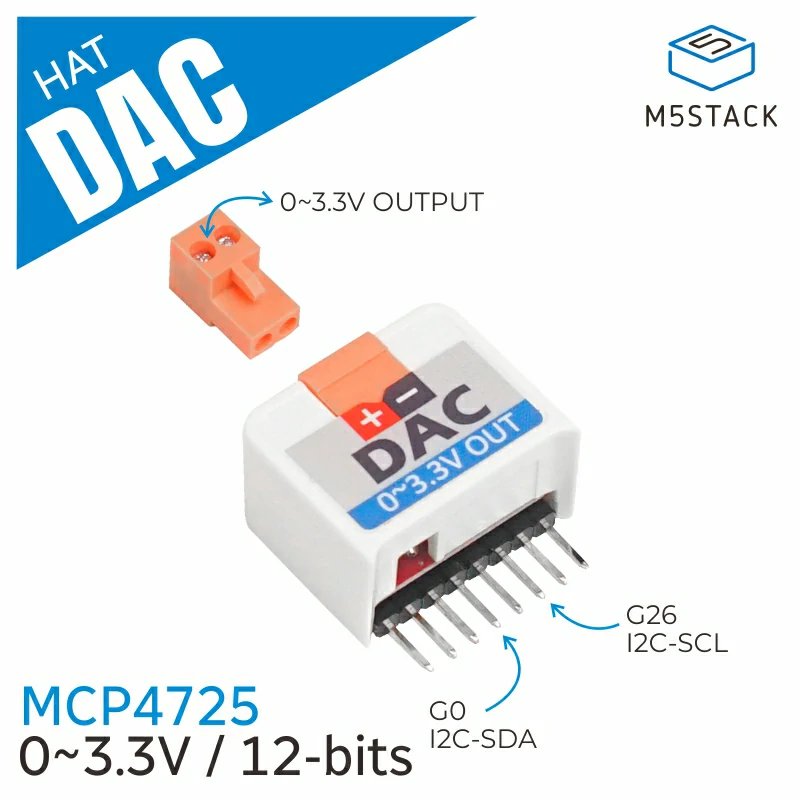
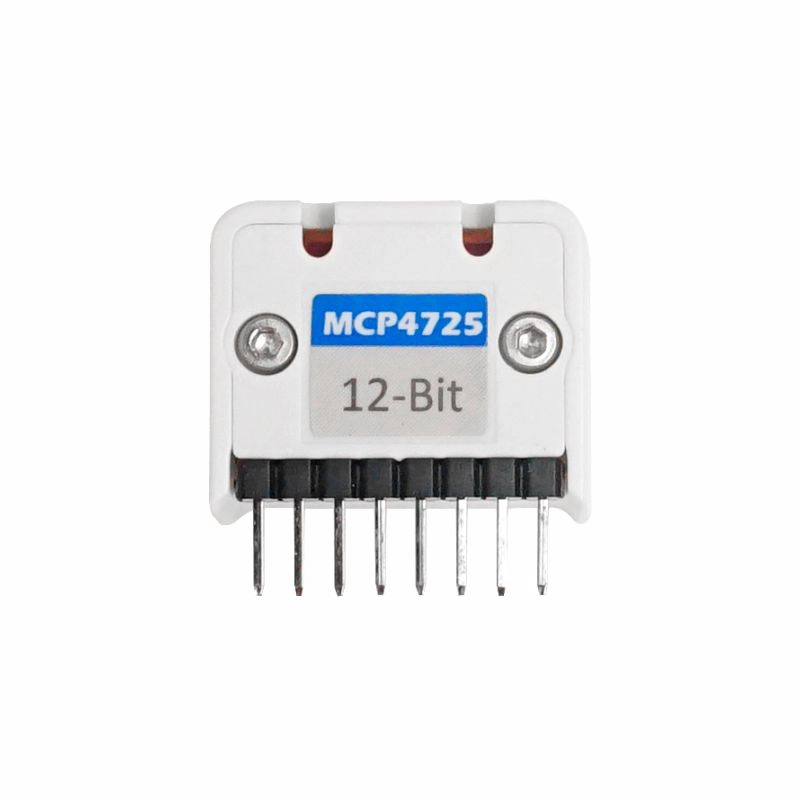
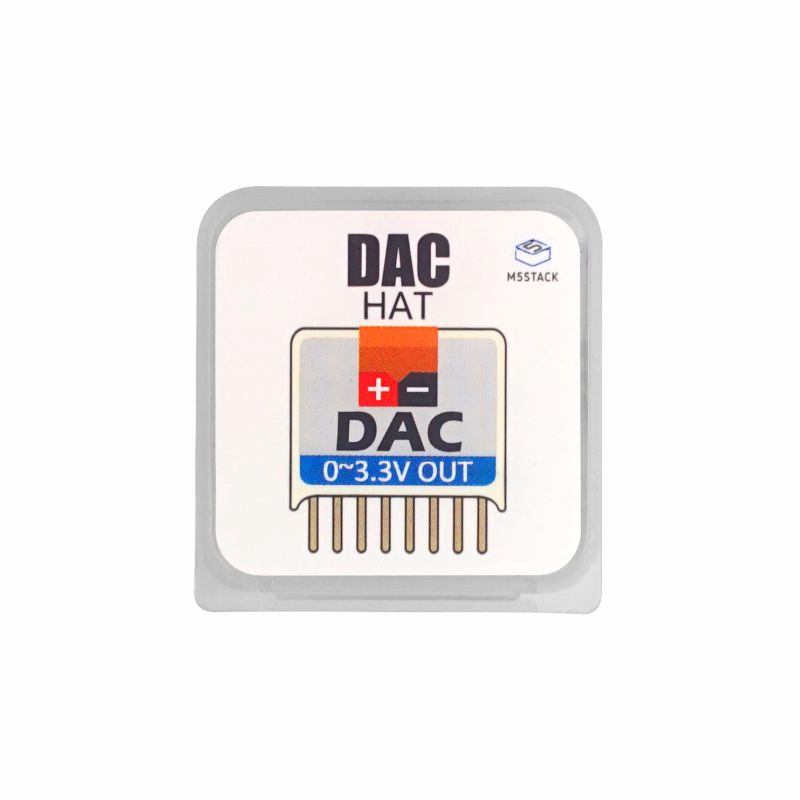
Description
DAC HAT is also a type of C-HAT specifically design for M5StickC controller. Same as DAC unit, this is a voltage output DAC converter for stickc. It can generate a voltage of 0~3.3V.
Packed with a DAC converter chip MCP4725, which is low-power, high accuracy, single-channel, 12-bit buffered voltage output Digital-to-Analog Converter (DAC) with a non-volatile memory (EEPROM). Its on-board precision output amplifier allows it to achieve rail-to-rail analog output swing.
The DAC input and configuration data can be programmed to the non-volatile memory (EEPROM) by the user using the I2C interface command.
I2C address: 0x60
Product Features
- Output: 0~3.3V
- Software Development Platform: Arduino, UIFlow(Blockly, Python)
- MCP4725
- 12-BitResolution
- External A0 Address Pin
- Normal or Power-DownMode
- Fast Settling Time of 6 μs (typical)
- ExternalVoltageReference(VDD)
- Rail-to-RailOutput
- LowPowerConsumption
- Single-SupplyOperation:2.7V to 5.5V
- I2C Interface: address 0x60
- ExtendedTemperatureRange:-40°Cto+125°C
Include
- 1x DAC HAT
- 1x 2 Pin 3.96 Pitch Terminal
Applications
- SetPointerOffsetTrimming
- SensorCalibration
- Closed-LoopServoControl
- LowPowerPortableInstrumentation • PCPeripherals
- DataAcquisitionSystems
Specification
| Resources | Parameter |
|---|---|
| Net weight | 6g |
| Gross weight | 19g |
| Product Size | 24*25*13mm |
| Package Size | 67*53*12mm |
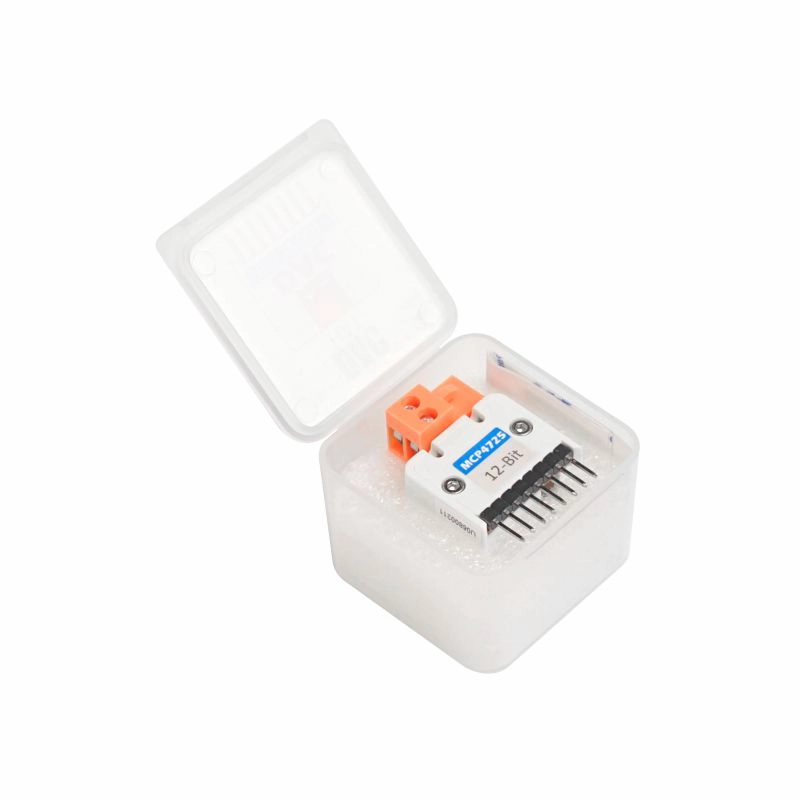
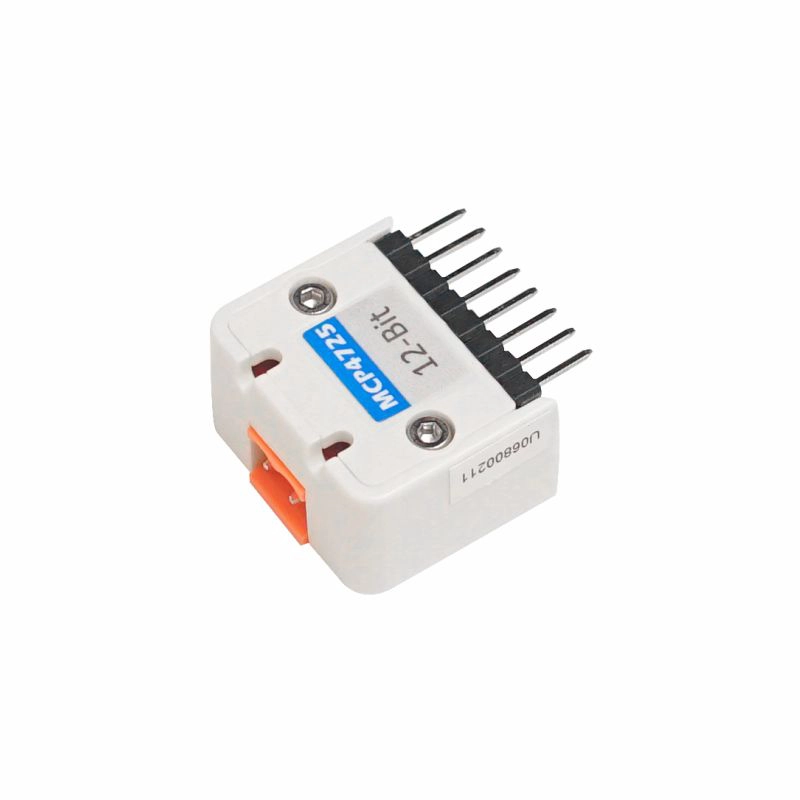
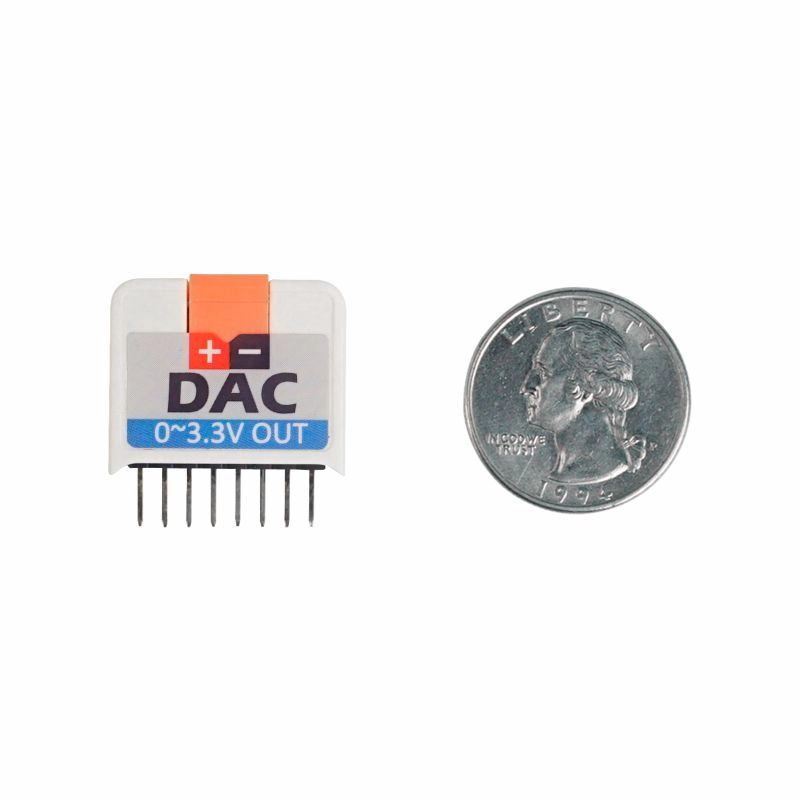
EasyLoader

1.EasyLoader is a simple and fast program burner. Every product page in EasyLoader provides a product-related case program. It can be burned to the master through simple steps, and a series of function verification can be performed.
- After downloading the software, double-click to run the application, connect the M5 device to the computer through the data cable, select the port parameters, click "Burn" to start burning. (For M5StickC burning, please Set the baud rate to 750000 or 115200)
Pin Map
| M5StickC | GPIO0 | GPIO26 | 5V | GND |
|---|---|---|---|---|
| HAT ADC | SDA | SCL | 5V | GND |
Schematic
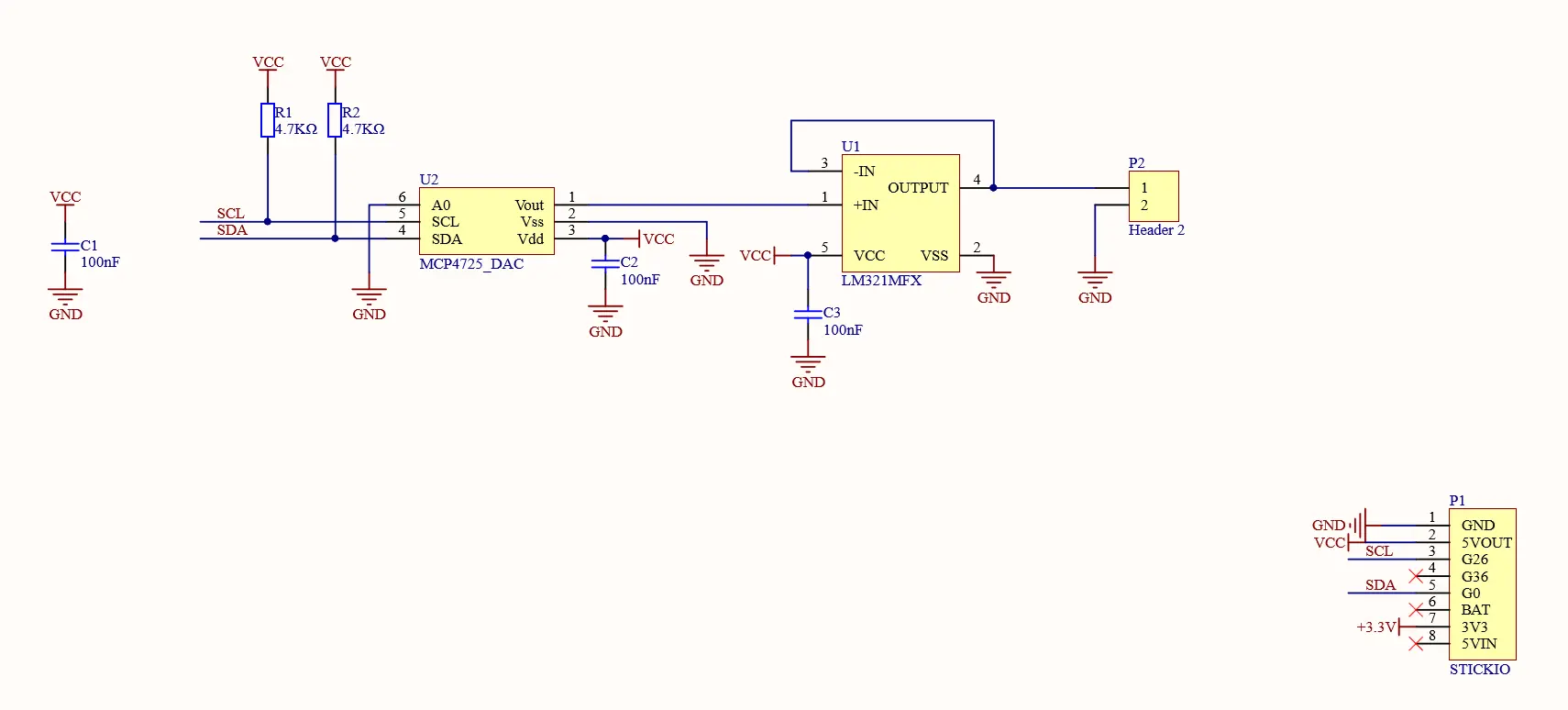
Related Link
- Datasheet - MCP4725
Example
1. Arduino IDE
UIFlow
Open http://flow.m5stack.com and Load Demo
